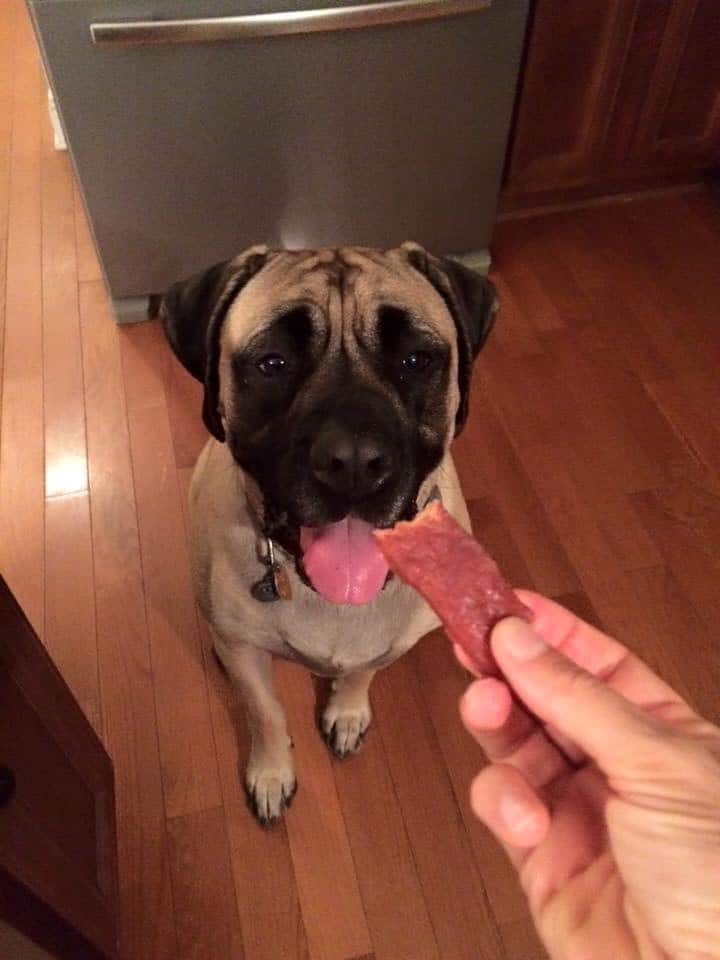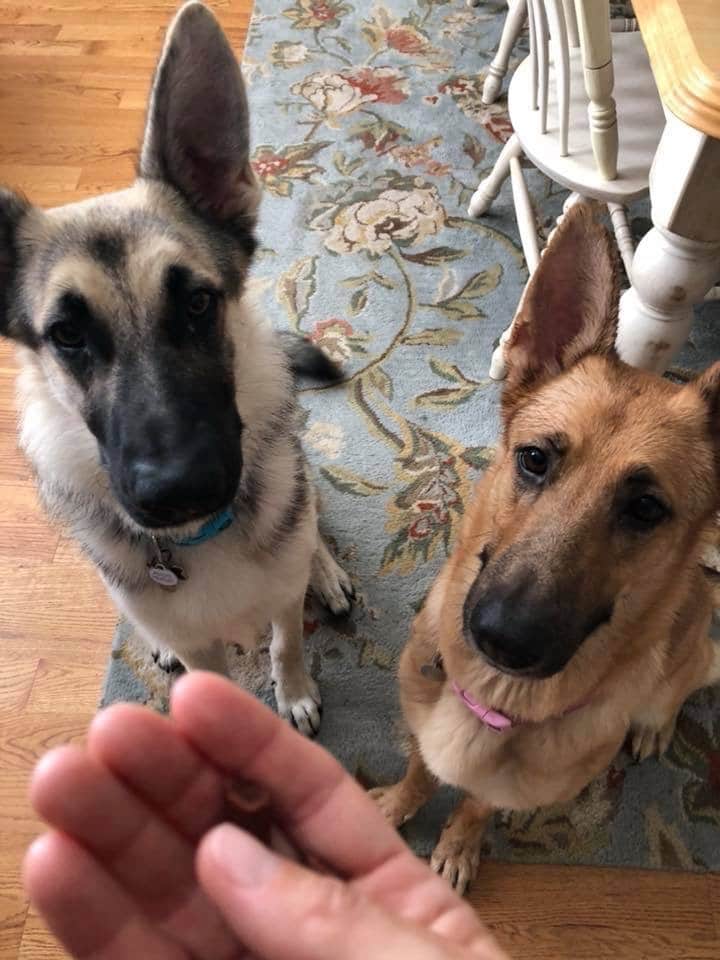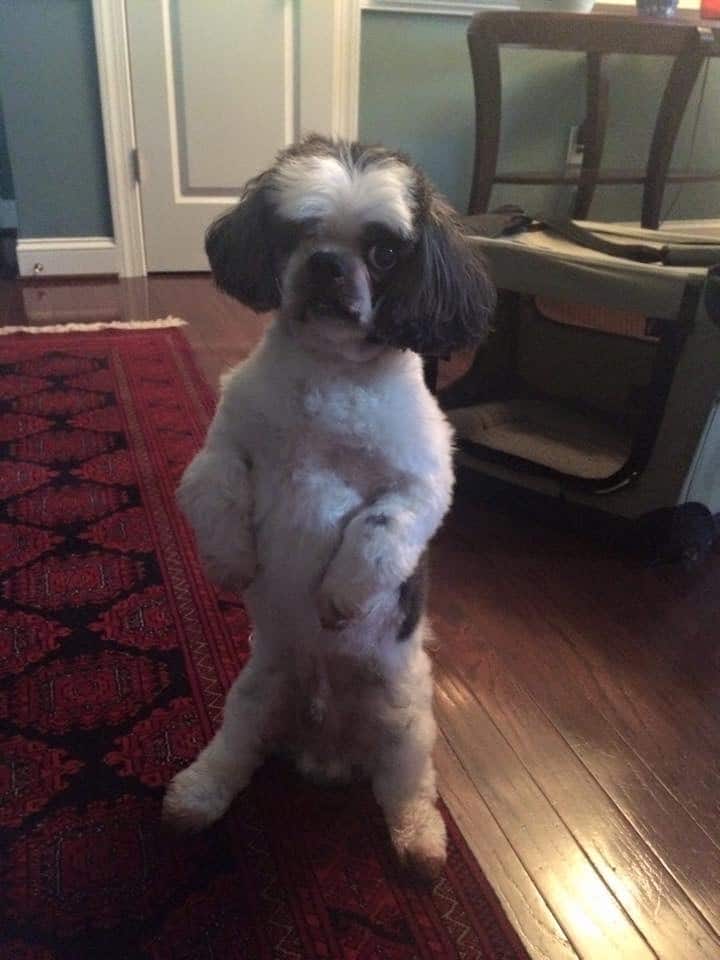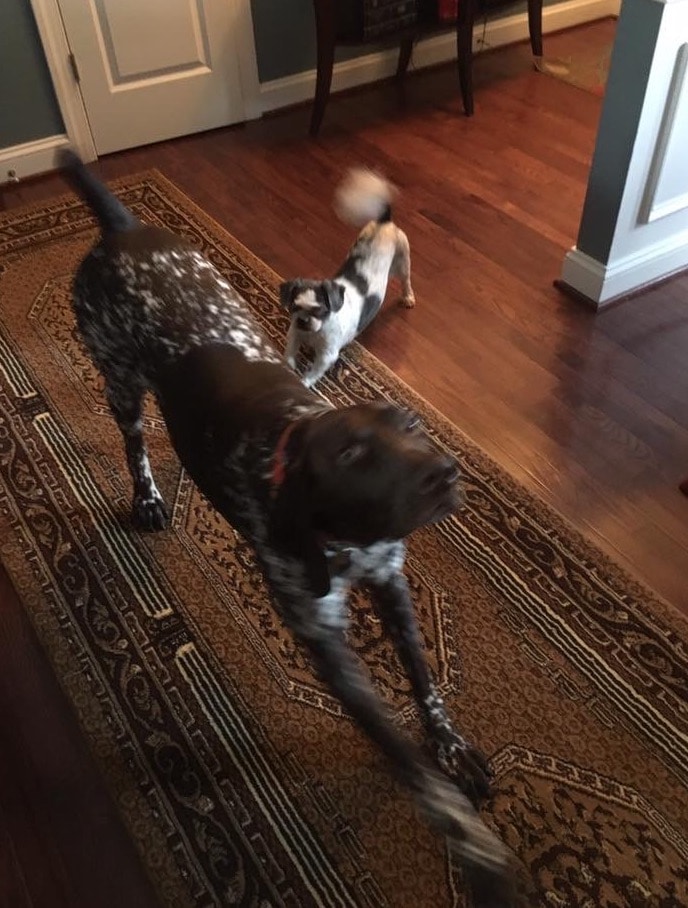Small dogs can be trained just like large dogs
It can take some getting used to the concept that your small dog can be trained just like a large dog. To help you with this, you can trick your brain a little.
Here’s what you can do: Just pretend your 10 lb pup is a 60 lb Labrador, or better yet how about a 100 lb Mastiff?
You don’t want him to jump on your guests and pull your arms out of your sockets while out on a walk, right? You also won’t pick him up and carry him around in your arms when he starts barking.
What it comes down to is that you don’t want to allow any behavior in your small dog that you wouldn’t accept in a large dog.


Next, make a list of behaviors and goals you would want your large dog to exhibit, then transfer them onto your small dog.
The first few items on your list might consist of obedience commands like “sit,” “down,” “stay,” and “come.” Next up could be polite greeting of people who come to your home, no jumping or leg humping, and polite leash manners.
This little guy below is Normie, a Shih-Tzu who’s half blind but still happy to perform a sit pretty trick in exchange for a treat!
Normie lives with his big German shorthaired brother Tab, which is a reason why he’s a well-behaved little fellow. Their owner has the same training standards for both dogs. The dogs are stretching in sync in the picture below.


Now let’s take a look at how to check the training items off your list!
You will need lots of tasty treats to train your dogs to play together and be nice to one another. You will also need patience and training time with a big dog and a small dog. If you dont own both big dogs and small dogs, but you still want them to get along, try to find a small dog that you can introduce your big guy to, so he knows that there are dogs of all sizes out in his world and he needs to know how to interact with them. You can do this by organizing play dates through your groomer or veterinarian, or you can take your dog to a dog park and see if anyone is interested in introducing their little guy to your big guy. Be sure to have treats for both dogs at all times.
As your big dog and small dog get more used to each other and are rewarded for good behavior when theyre together, try to have them together off-leash. Start this by keeping the leashes on the dogs but completely let go of them. This way, if something happens you can grab the leash pulling your dogs off of each other but without controlling them while theyre making their own choices to get along.
While you are socializing your little dog with other dogs his size, search for dogs that are a bit bigger than him but not by much. So if you have a small breed, search for something in between small and medium-sized. Repeat socializing these two dogs together in situations where your dog is safe but understands hes a little bit smaller than his new walking buddy.
If they are calm and curious about one another, you can look them both in the eyes and offer them each another treat. If they are aggressive, repeat the steps above where you hold up the treat without making eye contact and then hand one treat to each them wait a moment and then ignore them.
If your little guy is aggressive and you need to introduce a big dog into his world, socialize your little guy as much as you can away from the big dog. Start small by introducing your dog to dogs that are the same size. Keep them on leashes and meet in neutral territory, such as dog parks or even on a walk together. For the first several walks, keep your dogs playmate his size.
Why dog training tools are helpful
Simply put, dog training tools make your life easier!
A treat bag is so much more convenient than digging into your pockets for treats. It holds your high-value treats like cut up chicken or hot dog, or anything fishy or smelly like green tripe treats. The smellier, the better because your dog will want to get to that smelly goodness!
Just make sure to hand out TINY food rewards because small dogs fill up fast. You also don’t want them spending too much time eating the treat. Get Mighty Paw’s treat bag HERE.
The only time I recommend a retractable leash is for recall training purposes, meaning when you teach your dog to come when called. For other activities like walks, hikes, and trips to the vet, groomer, or pet-friendly stores, I recommend using a standard leash that won’t get you or your dog tangled or hurt.
The reason why I’m suggesting these approaches is because they’re exactly what I did when I first started learning about dog training.
I bought several dog training books, armed myself with above listed dog training tools, AND signed up for a basic obedience class. My boxer-mix pups turned out to be very well-behaved, so it was money well spent!
Cesar Millan Explains: Little Dogs Playing with Big Dogs
My 80-pound Labrador, Logan, was quivering in excitement to meet his new little brother. “Little” was not an exaggeration. My new Papillon puppy, Finian, weighed a scant 1.2 pounds. Was the size difference between the two a big deal? Yes! Planning ahead, I had prepared everything for a safe, positive introduction.
I sat on the couch with Finian in my lap, which put him at about Logan’s height. My friend Jenny was with me to manage Logan should he get too excited. Logan was well trained, but he was so excited I didn’t want to take a chance on anything going wrong. He had been raised with my previous Papillon, so he was used to little dogs. Finian, however, had yet to meet a large dog.
Logan approached and shoved his blocky head under Fin, checking him out thoroughly. Finian began kissing Logan’s head, then bopped him happily with his front paws. In that moment, they were best friends.
Just because initial introductions went perfectly didn’t mean I immediately let them run loose together unattended. Finian needed to gain some weight and grow up some before I would consider the two to be safe with one another. Logan was extremely friendly and a registered therapy dog, but he was a happy-go-lucky Labrador. One friendly paw swipe could have easily catapulted Finian across the room. Plus, Finian was no saint as a puppy. He would latch onto Logan’s jowls and tug! They needed careful monitoring and further training before they could safely coexist together.
Big dogs and little dogs can safely live together, but there are precautions you need to take to ensure all goes well.